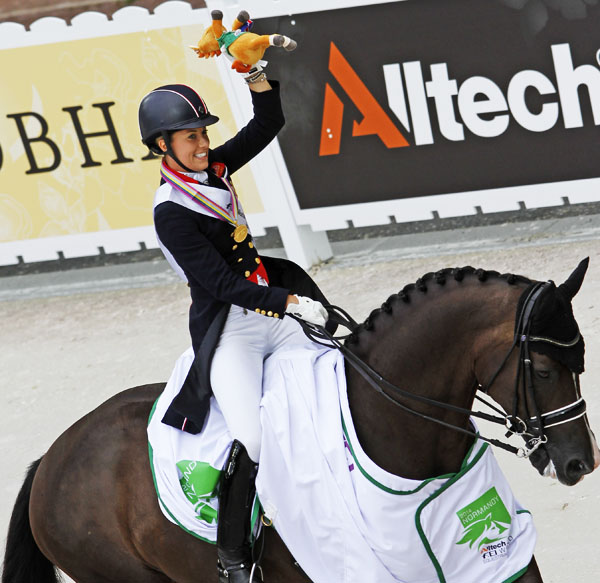2018 World Equestrian Games by the Numbers – Part 2 of 2
9 years ago StraightArrow Comments Off on 2018 World Equestrian Games by the Numbers – Part 2 of 2

By KENNETH J. BRADDICK
Organizers of the 2018 World Equestrian Games are reducing expectations by cutting projections for spectators to about 350,000 from the initial target of more than half a million at Bromont about an hour from Montreal.
The organizing committee has so far obtained about $20 million (US$15 million/€13.6 million) in pledges of Quebec government funding, a fraction of the amount raised to stage the two previous World Games, the showcase of the seven international equestrian disciplines plus para equestrian held once every four years.
No major sponsorship similar to the backing by the U.S. company, Alltech, for the 2010 WEG in Kentucky and 2014 in Normandy, France has been signed so far and there is little of the infrastructure that was in place at the 2006 Games in Aachen, Germany.
Bromont was selected after a first round of bidding which initially attracted cities in Australia, Africa, multiple locations in Europe as well as North America. However, all the bidders eventually dropped out except for Bromont which was then turned down by the FEI for lack of funding. Four cities bid in a second round, but London and Wellington, Florida quickly dropped out and Lexington, Kentucky did not form an organizing committee that left Bromont as the sole candidate.
Bromont, site of equestrian events for the 1976 Olympics in Montreal at least an hour away, will depend on government grants, sponsorship and ticket sales to fund development of the site for the program of dressage, driving, endurance, eventing, jumping, reining and vaulting as well as para equestrian.
An estimate by the organizing committee known as COJEM, the acronym for its title in French, of more than 507,000 spectators has been announced in reports of developments for the event that was awarded by the International Equestrian Federation (FEI) in June, 2014.
The spectator number was described by a spokesperson as probably a result of early exuberance but the number being used in presentations was 350,000.
The Bromont organizers project about 1 000 riders from 65 countries to participate before the estimated 507 000 spectators.
The WEG is forecast to be “one of the largest single sporting events hosted in Canada” that a study by the Canadian Sport Tourism Alliance projected would generate $435 million (US$328/€297 million) in total economic activity for Canada and $274 million for Bromont/Montreal. The net for Quebec, it reported, would be $208 million.
The FEI, however, has estimated that Bromont “will undoubtedly be smaller–fewer horses will travel from Europe due to the costs associated. Additionally, the proposed venue set-up is considerably more compact.”
Comparisons with other World Games are difficult as most have government involvement using different models to calculate costs and benefits. Some include the entire population of a WEG including 25,000 accredited personnel–athletes and support, officials, volunteers and media, for example–as well as free admission to school children and others in total spectator numbers.
A brief description of the three recent WEGs:
—2014 Normandy, France–A record 74 nations with 984 athletes and 1,243 horses participated. Organizers reported 574,000 spectators, but 428,000 tickets were sold for sporting events. Events were widely separated and vendors were located away from the main stadium.
A study for the French institute for agronomic research, estimated the Games provided €368 ($414) million for France. including €102 (US$114.8) million to Normandy. The Games made a profit, including covering public funding of €46.2/$52 million.

—2010 Lexington, Kentucky–The first WEG outside Europe and the first to include para dressage with 632 athletes and 752 horses from 58 countries. Spectator numbers were put at a total of 419,853 with tickets sold or complimentary.
More than $100 million (€90 million) was spent making substantial improvements to the Kentucky Horse Park to host the Games and an estimated $80 million (€72 million) for operations.
Economic impact was estimated by a state government study at $201.5 million (€142 million at then exchange rates) in direct and indirect spending.
—2006 Aachen, Germany—Aachen was the first WEG since the founding of the combined championships in 1990 to break even. Organizers spent €21.6 million (US$26.6 million at the then exchange rate) on operations and €17.7 million (US$22.6 million) on capital improvements.
There were 767 athletes from 59 nations in the seven disciplines and more than 570,000 tickets were sold to visitors from 61 nations.
Local economic impact was estimated at $328 million.


